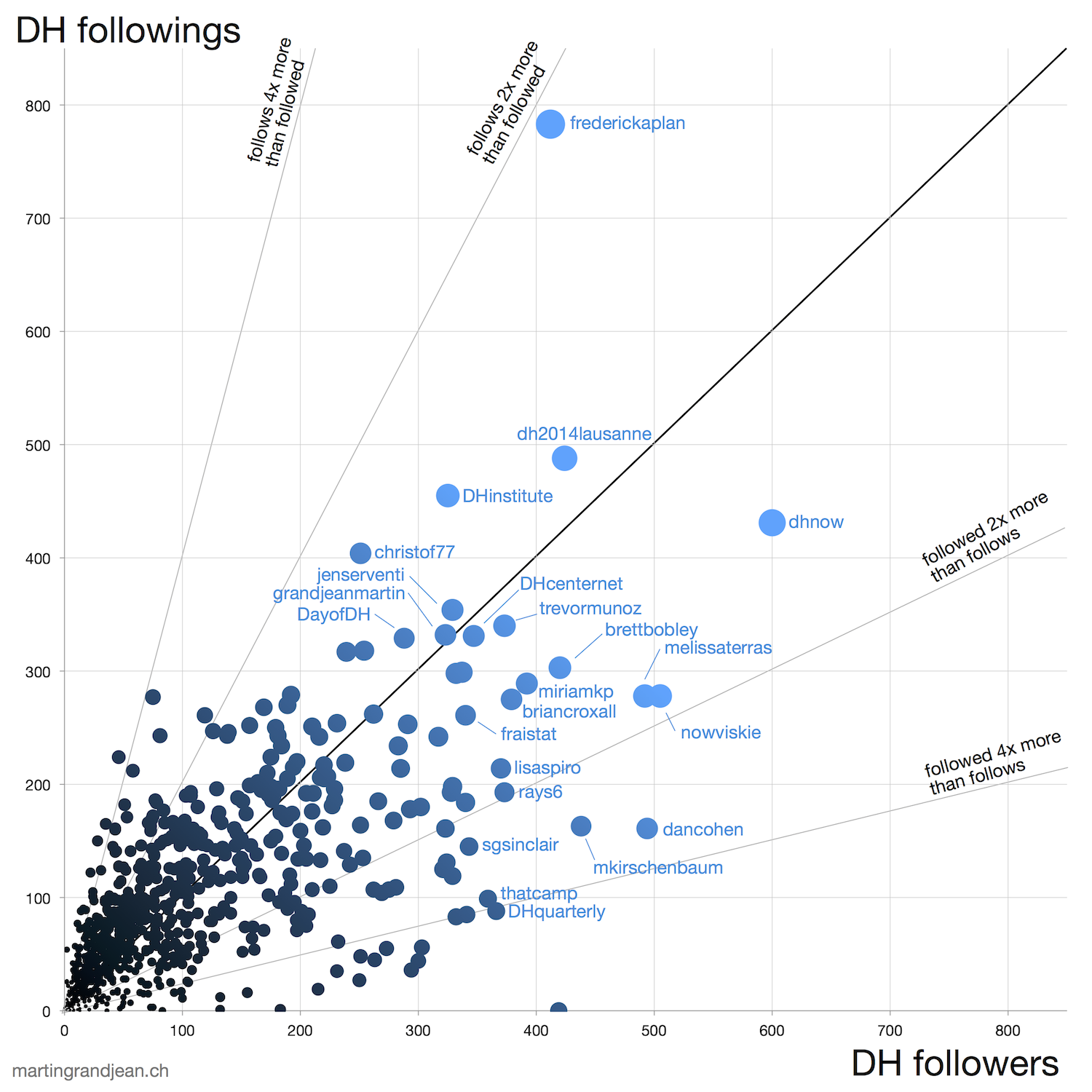Who’s following who in the digital humanities network ? Usually at the forefront in the use of digital tools, the representatives of this area of research use Twitter to share and communicate. This post provides an outline of “friends/following” relations in a group of 800 digital humanists on Twitter, from a quantitative point of view. This approach offers a different perspective on this very specific scientific field.
The complete network
The graph below shows the dense “following” network of 800 digital humanists.

> Update: A complete version with all names is available here.
Following or/and being followed
As the first graph showed the in+out degree of the nodes, it is interesting to look more specifically at the followings/followers ratio.
 Between “pop stars/influencers/snobs/guru/…” (strike out where not applicable…) who hardly follow nobody and “networkers/technology scouts/…” who follow a large number of accounts, the different uses of Twitter are numerous. Below, two summary tables:
Between “pop stars/influencers/snobs/guru/…” (strike out where not applicable…) who hardly follow nobody and “networkers/technology scouts/…” who follow a large number of accounts, the different uses of Twitter are numerous. Below, two summary tables:
[twocol_one_first]Followed by digital humanists [/twocol_one_first][twocol_one_last]Following digital humanists
[/twocol_one_first][twocol_one_last]Following digital humanists [/twocol_one_last]
[/twocol_one_last]
.
Who’s in the list ?
[twocol_one_first]The list contains 800 accounts manually identified as members of the “DH community”. The data analyzed here were compiled in the days that followed the international DH2014 conference.
The list is still growing. Feel free to:
- Follow this list (here right)
- Submit your own lists to complete (by leaving a comment below)
- Analyze yourself the content of the tweets posted by members of the list, etc.
[/twocol_one_first][twocol_one_last]Tweets de https://twitter.com/GrandjeanMartin/digital-humanities [/twocol_one_last]
Twitter Networks: Static or Dynamic?
This “who follows who?” analysis is the static part of the analysis of the digital humanities community on Twitter. I’ve had the opportunity to publish the dynamic part in a recent post that visualized all tweets sent during #DH2014 (here right) or other DH conferences: THATcamp St-Malo (2013); German Historic Institute (2013); Swiss DH Summer School (2013); Just-in-time Sociology (2012). [Note: we’re not speaking about “dynamic network analysis” but about the analysis of a dynamic network]
Acknowledgements: Thanks you to @orkkaphly for his precious help in data processing.


Just getting to this article looking for in-depth analysis of twitter. Really glad it brought me to your blog. I’ve bookmarked it. I’m going to share an API in my link that correlates themes in streams of unstructured information. We built a free tool called tweetzup (http://www.tweetzup.com/) with it that analyzes the patterns of tweets around topics you can check out, too. Mostly, though, I’d love to see what you can do with the API. Thanks for your work. -Robert